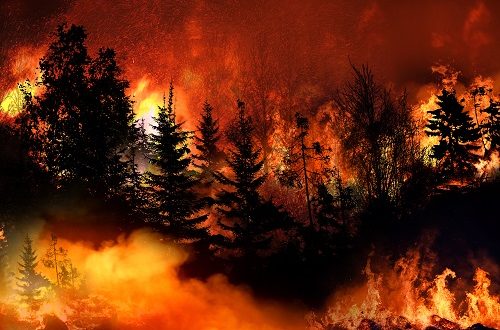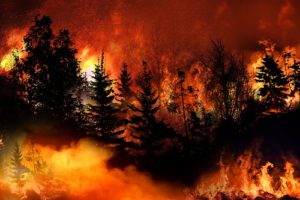Extreme Fire Conditions
It doesn’t matter how well you prepare. When the conditions turn extreme, fire will spread quickly. You can do everything recommended, and you can still end up facing the biggest nightmare of your life.
This doesn’t mean it’s not worth taking steps to protect your home. However, you’ll need to understand what extreme fire conditions mean to help you know when it’s time to just get out of dodge.
Dropping in Humidity Levels
Humidity in the air is a good thing for preventing fires. It’s when the humidity drops that you want to pay close attention. Look out for when the humidity levels drop to below 20%. You’ll also want to keep an eye on moisture content of small fuels. Extreme conditions are when they drop below 5%.
This is considered a powder keg. The lack of moisture means that the fuel is ripe for just setting ablaze. One lightning strike could cause a spark.
Wind Speeds Will Also Be a Factor
You’ll also want to look out for the wind speeds in the area. As the humidity drops, look out for winds that are 20 mph or more. These types of wind speeds make it very easy to spread the fire.
High wind speeds will help sparks of flames jump. You could have a buffer that is perfect under normal circumstances. Add the high winds and the sparks will fly, leading to something miles away catching fire.
Large Decreases in Air Temperature
Something else to watch out for is when the air temperatures face a large decrease suddenly. There doesn’t even have to be a high wind for this to happen. It’s one of the least obvious extreme conditions.
In this case, the heated air will rise faster and pulls in air from around it. This leads to winds rushing in and they become erratic. Mixed with low humidity and moisture, you’ve got a dangerous situation to be in.
Knowing the Situation Is Dangerous
Look out for fires that have a column of smoke rising 20,000 ft or more. This type of fire can lead to a mega fire known as a pyrocummulus. The most dangerous element about this type of fire is that it will generate its own weather, including rain and lightning. You may think the rain is good, but the lightning makes it far more dangerous.
Remember there is also the wind involved. You’ll end up with rotating winds, which leads to a firestorm. There is no predicting the fires in this case, and it can lead to disastrous conditions. Back in 1871, the Peshtigo Fire caused more than 2,000 deaths and the destruction of almost four million acres of woodland.
Throw in a thunderstorm and you can see the wind suddenly change course. This then spreads the fire back the way it came, leading it into another direction and forcing firefighters to face a fire on two fronts.
If you see these extreme conditions, you’ll want to get out as soon as possible.

